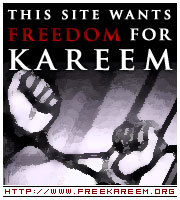Stratfor on Latest Al Qaeda Tapes
Arab satellite news network Al Jazeera released excerpts of a video featuring al Qaeda's second-in-command, Ayman al-Zawahiri, on Dec. 20. His statement was unusual in that it was released by Al Jazeera rather than by al Qaeda's As-Sahab media production house -- although As-Sahab posted banner ads on jihadist Web sites and in jihadist chat rooms Dec. 18 announcing the impending release of the video. Prior to the Jan. 13 airstrike on an alleged al Qaeda safe-house in Damadola, Pakistan, al Qaeda delivered several statements to Al Jazeera by a system of couriers. This system could have been compromised and could have led to the airstrike, which killed several prominent al Qaeda leaders. Most of the statements and previews from al Qaeda's top leaders that came after the Damadola strike were released online via As-Sahab rather than by Al Jazeera. It is possible that the Oct. 30 airstrike on a seminary believed to be harboring prominent al Qaeda members in the village of Chingai, in Pakistan's Bajaur agency, took out a critical element or elements of As-Sahab, necessitating a return to using Al Jazeera as al Qaeda's media outlet. It is also possible that As-Sahab's Internet distribution method has been compromised by some intelligence, or by technical means, rendering it too risky to use. The Dec. 20 release shows al-Zawahiri in his black turban and white robe, with an assault rifle propped up against the backdrop behind his right shoulder, as he has appeared in most videos. The backdrop in the video is a plain brown, similar to that seen in videos released in April 2004, October 2005, January 2006 and September 2006. In the video, Al-Zawahiri refers to the Oct. 30 strike on Chingai, the 89th anniversary of the Balfour Declaration on Nov. 2 and the Nov. 7 U.S. midterm congressional elections. Because al-Zawahiri mentions the Nov. 30 meeting between U.S. President George W. Bush and Iraqi Prime Minister Nouri al-Maliki, the tape was clearly made after that date; thus, it is obvious that al-Zawahiri was not at the seminary in Chingai when it was hit (or, if he was, he survived). The tape also puts to rest theories that al-Zawahiri was keeping a low profile prior to a major al Qaeda strike against the United States. Assuming the video was made after Nov. 30, it took al-Zawahiri a very long time to address the strike at Chingai. (Within three weeks of the Damadola strike, As-Sahab released a video of al-Zawahiri condemning the attack.) This lapse led to speculation that he was killed in the strike. Of course, it is also possible that al Qaeda's media distribution network had been compromised to the point that intelligence gained from it led to the Chingai airstrike. If that were the case, the jihadist network would have needed more time to plug the leaks and develop an alternate distribution method. Previously, the core of al Qaeda's leadership responded to events and released statements about them in as little as two weeks -- such as al-Zawahiri's Oct. 23 statement referring to the Oct. 8 earthquake in Pakistan. That it took al Qaeda so long to provide proof of life after the Chingai strike, and that al Qaeda released the latest video using uncharacteristic means, indicates that the group's media distribution network could have taken a serious hit at Chingai.[Stratfor] |

No comments:
Post a Comment